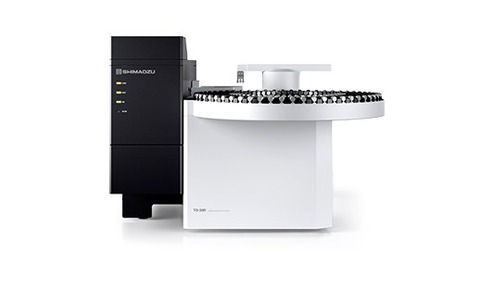
Shimadzu Scientific Instruments has launched the TD-30 series of thermal desorption systems. The pretreatment sample introduction units will be available for use with the company's new Nexis GC-2030 Gas Chromatograph as well as its entire
GCMS product line.
With large sample capacities, an efficient workflow, and a robust design, they are ideally suited for the analysis of trace components in such industries as environmental, chemical, food, and automotive.
The TD-30 series consists of two models, TD-30 and TD-30R. The TD-30 is equipped with a 60-sample carousel, whilst the TD-30R has the ability to hold 120 samples - making it well-suited to large-volume automated analysis. Both are equipped with
a retrapping function that allows split samples desorbed from the tube and loaded into the GCMS to be trapped again for potential re-measurement. An overlap function dramatically improves processing functionality by starting pretreatment of a
sample while the previous sample is still being analysed. The ability to add an internal standard in the TD-30R allows highly accurate, reliable quantitative analysis, even of trace components.
Both thermal desorption units have been designed for ease of use and simplified maintenance. The sample tray position has been lowered to make it easier to use, and consumables can be replaced easily without using tools. A software function
maintains a record of consumables and maintenance parts usage, which helps to minimise downtime by ensuring appropriate parts are in stock. In addition, the TD-30 models feature a built-in tube protection sensor, which significantly reduces
tube damage during cap removal. The TD-30R also offers the option of a barcode reader, which enables reliable sample management and verification of tubing conditions during an analysis.
The Shimadzu TD-30 series systems can be used for a variety of applications including the analysis of toxic atmospheric pollutants, flavor components in food products, the air in cleanrooms, and foul odors from products. Other applications
include the analysis of toxic substances in the atmosphere and substances responsible for sick house syndrome, and analysis of automotive interior materials and electrical equipment materials, where the detection of compounds with a wide range of boiling points is required.





